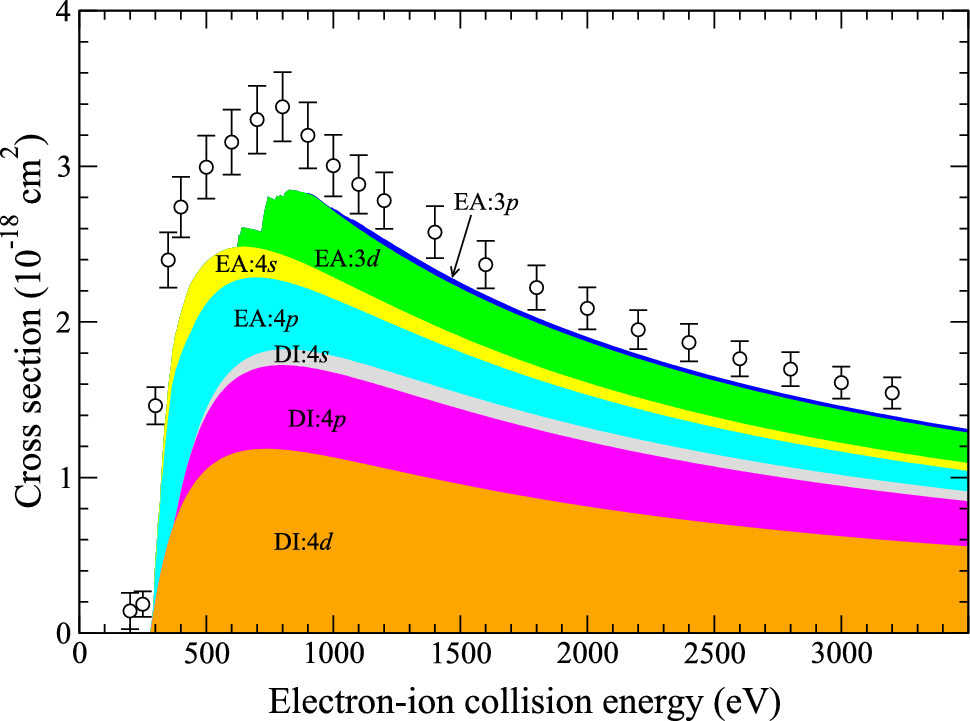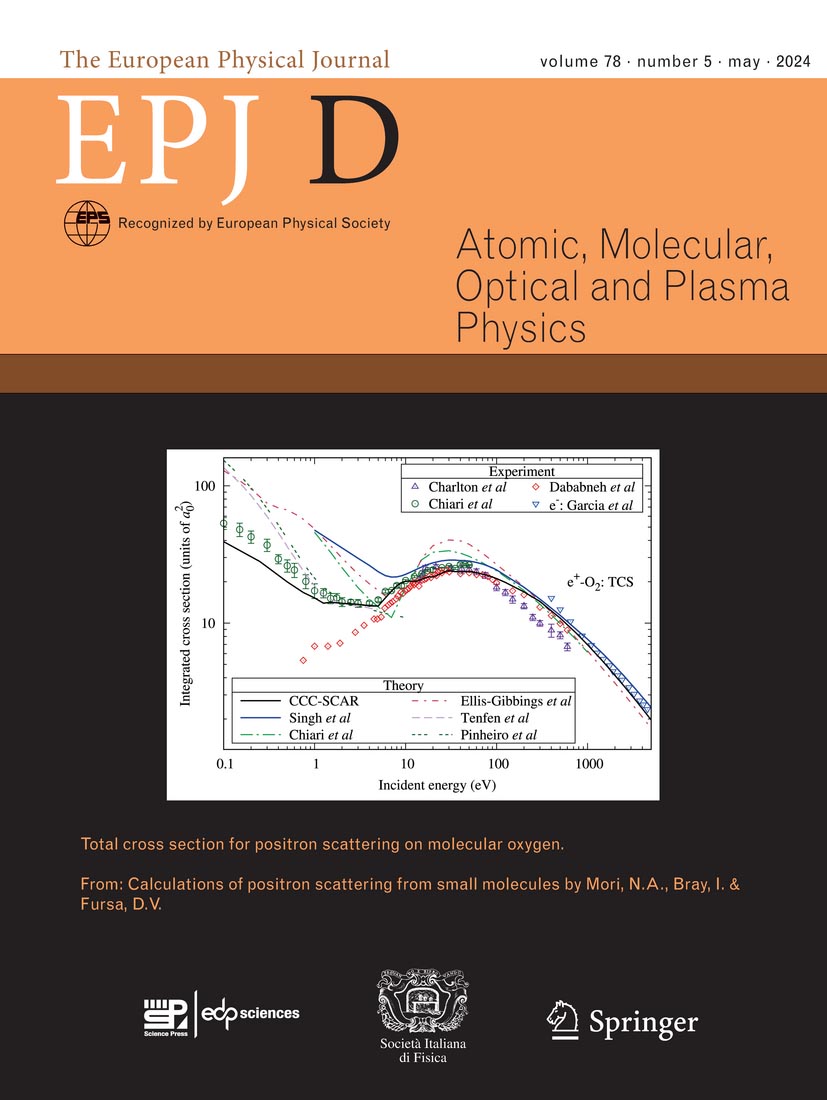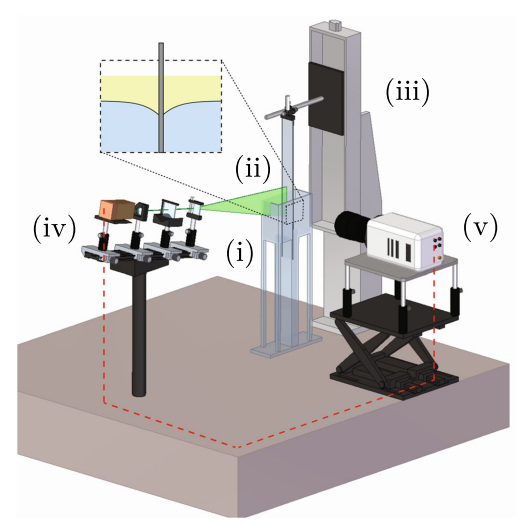News
EPJ AP: Vincent Mauchamp new Editor-in-Chief
- Details
- Published on 04 July 2024

The publishers of The European Physical Journal Applied Physics are pleased to announce the appointment of Professor Vincent Mauchamp as new Editor-in-Chief.
Vincent Mauchamp is Professor at the department of Physics of the University of Poitiers. After a master’s degree in Condensed Matter Physics, he received a PhD in materials science from the University of Nantes where he worked on the characterization of lithium-ion battery electrodes using Electron Energy-Loss Spectroscopy. After a post-doc at the INSA Lyon, he joined the Pprime institute in 2007. His research activities are now mainly focused on the electronic structure, electronic properties and functionalization of two-dimensional transition metal carbides - so-called MXenes - as probed by different kinds of spectroscopies (EELS, XPS, optical spectroscopy, XAS, etc), and combined to Density Functional Theory simulations.
EPJ AP: Philippe Moreau new Editor-in-Chief
- Details
- Published on 04 July 2024

The publishers of The European Physical Journal Applied Physics are pleased to announce the appointment of Professor Philippe Moreau as new Editor-in-Chief.
Philippe Moreau is an alumini of the Ecole Nationale Supérieure des Industries Chimiques (ENSIC in Nancy, France : "Grande Ecole" specialised in Chemical Engeneering). During his PhD at University of Nantes, his focus became redirected towards the study of materials and their characterisation through advanced spectroscopies (XAS, EELS...) and electronic structure calculations. While at the Cavendish Laboratory (Cambridge, England) in his postdoctoral position under the supervision of Prof. A. Howie, he developped an expertise in Electron Energy-Loss Spectroscopy in a Transmission Electron Microscope. He became Assistant Professor at the University of Nantes in 1998 and full Professor in 2019 and teaches inorganic chemistry, electron microscopy and, photon and electron based spectroscopies. He is now assisting in managing a group of 50 members developing research on materials for storage and conversion of energy.
EPJ E Topical Issue: Festschrift in honor of Philip (Fyl) Pincus
- Details
- Published on 26 June 2024

Guest Editors: David Andelman,
Jean-Marc Di Meglio, and Cyrus R. Safinya
This topical issue comprises 49 contributions covering a broad range of topics, which advance the understanding of soft and biological matter systems from physical and chemical aspects. More than 200 scientists globally contributed to this noteworthy Festschrift, which is divided into thematic categories.
The first theme is focused on equilibrium and non-equilibrium soft matter systems, including topics associated with polymers and colloidal systems, in uncharged and charged systems, where Pincus has made lasting contributions. In addition, other contributions are concerned with liquids, flowing and active matter, and granular systems. The second theme groups together many contributions that are focused on biological physics, including properties of the cell cytoskeleton and associated proteins, intrinsically disordered proteins, lipid membranes, membrane-associated proteins, and assembly and interactions of viral capsids with lipids and polymers. A third group of contributions is in the nascent field of biomolecular and biomimetic materials at the crossroads between physics, chemistry, bioengineering, and materials science. Finally, systems dealing with far-from-equilibrium states of matter in biology are addressed by a few contributions focusing on the physical properties of living cells.
All articles of this collection are available here and are freely accessible until 20 August 2024. For further information read the Editorial.
Miguel A.F. Sanjuán, Member of the Royal Academy of Sciences of Spain
- Details
- Published on 25 June 2024

Prof. Miguel A.F. Sanjuán, member of the EPJ Scientific Advisory Committee, will be inducted into the Royal Academy of Sciences of Spain on Thursday, June 27th, at 6:00 PM. On this occasion, he will deliver the speech "Nonlinear Dynamics, Chaos and Complexity: Interdisciplinarity in the Sciences". The response speech will be delivered by Prof. Dr. Jesús María Sanz-Serna, the current President of the Academy. The ceremony can be followed on Youtube: [Real Academia de Ciencias Exactas, Físicas y Naturales de España] (https://www.youtube.com/@realacademiadecienciasexac6019/streams).
EPJ Plus Highlight - Assessing the place of citizen science in modern research
- Details
- Published on 24 June 2024

New analysis presents recommendations for EU-funded research projects on how citizen science can be deployed to ensure the best possible outcomes for both research and public engagement.
In recent years, numerous fields of research have seen an explosion in the volume and complexity of their scientific data. To keep pace with these changes, EU-funded research projects are increasingly crowdsourcing their data through citizen science projects, which allow the public to engage directly with their research.
Through a detailed analysis published in EPJ Plus, Stephen Serjeant and colleagues at The Open University present new recommendations for how citizen science should be deployed to ensure the best possible outcome for research. The team’s insights could help researchers to better understand the potential impacts of this new way of doing science.
EPJ E Highlight - Tuning the movement of a self-propelled robot to the physics of living matter
- Details
- Published on 24 June 2024

The two-wheeled robot employs a range of complex active dynamics that can be implemented with precise control.
Robots are becoming an increasingly important part of our lives, performing jobs that are too dangerous for humans. This can often involve navigating complex environments, something rigid-bodied autonomous robots find difficult. Such robots faced similar challenges when miniaturised and used to model physics of living matter.
These challenges could be countered by a robot that can move with the mobility of living things and can respond to environmental signals just like a cellular organism. To model such systems experimentally, it is necessary to develop a tunable system that can replicate life-like dynamics.
In a new paper in the EPJ E, the authors, including Nitin Kumar from the Indian Institute of Technology Bombay and his co-authors, describe the development of a scheme for generating tunable active dynamics in a self-propelled robotic device. The result is a two-wheeled robot that utilizes a simple differential-drive mechanism, enabling a range of complex active dynamics to be implemented with precise control.
EPJ D Highlight - Determining Refractive Index at Relativistic Speeds
- Details
- Published on 24 June 2024

Ideas first posed by seventeenth-century physicists have been extended in determining the mechanical refractive index of particles travelling at speeds close to that of light.
If you studied advanced physics at high school, there’s a good chance that you remember Snell’s law, which states how a ray of light bends when it crosses a boundary between two media. According to this law, the ratio of the sines of the incident and refracted angles is a non-universal constant, later understood as the relative refractive index of the refracting medium with respect to the incident one.
EPJ D Highlight - Electron-impact ionization calculations match with experiments
- Details
- Published on 24 June 2024

Through a new calculation approach, researchers have made far more accurate predictions of how atoms are ionized when impacted by high-energy electrons.
During electron-impact ionization (EII), high-energy electrons collide with atoms, knocking away one or more of their outer electrons. To calculate the probability that ionization will occur during these impacts, researchers use a quantity named the ionization ‘cross-section’. EII is among the main processes affecting the balance of charges in hot plasma, but so far, its cross-section has proven incredibly difficult to study through theoretical calculations.
Through new research published in EPJ D, Stefan Schippers and colleagues at Justus-Liebig University of Giessen, Germany, present new calculations for the EII cross-section, which closely match with their experimental results. Their discoveries could provide useful new insights in many fields of research where hot plasma is studied: including astrophysics and controlled nuclear fusion.
EPJ D Topical Issue - Atomic and Molecular Data and Their Applications: ICAMDATA 2022
- Details
- Published on 21 June 2024

Guest Editors: Annarita Laricchiuta, Iouli E. Gordon, Christian Hill, Gianpiero Colonna and Sylwia Ptasinska
Atomic and Molecular Data and Their Applications: the generation, collection and diffusion of accurate and consistent atomic and molecular (AM) data is crucial in various fields of science and technology, requiring the cross-disciplinary cooperation of AM data producers and users and the coordination of AM data activities and databases.
The Topical Issue collects 20 papers, giving a snapshot of the efforts of the community in the field of data production and curation. The majority of the papers are focused on the theoretical derivation of structural properties of atoms and molecules and of dynamical data (cross sections and rate coefficients) for electron scattering and heavy-particle collision processes, with different approaches. Some papers presenting experimental activity are also included in the collection. Published results contribute to the construction of new knowledge and aim at giving answer to data needs in different fields of application, ranging from astrophysics and fusion plasmas to low-temperature plasmas for technological discharges and aerothermodynamics. Another relevant topic is the data collection and dissemination through the existing web infrastructures, establishing criteria and indicators for the critical and systematic analysis and formulating new paradigms and best practices.
This Topical Issue stems from the 12th International Conference on Atomic and Molecular Data and Their Applications (ICAMDATA), held in Mola di Bari (Italy) in September 2022.
All articles are available here and are freely accessible until 18 August 2024. For further information read the Editorial.
EPJ ST Highlight – Observing Flows at a Liquid-Liquid-Solid Intersection
- Details
- Published on 21 June 2024

Experiments reveal how a liquid-liquid interface interacts with a moving contact line.
Most of us are familiar with the classic example of a liquid-gas moving contact line on a solid surface: a raindrop, sheared by the wind, creeps along a glass windscreen. The contact line’s movements depend on the interplay between viscous and surface tension forces - a relationship that has been thoroughly investigated in experimental fluid mechanics. In a study published in EPJ Special Topics (EPJ ST), Harish Dixit, of the Indian Institute of Technology Hyderabad, and his colleagues now examine the movements of a contact line formed at the interface between two immiscible liquids and a solid. The experiments fill a gap in fluid dynamics and suggest a mechanism for an imposed boundary condition that eludes mathematical description.




